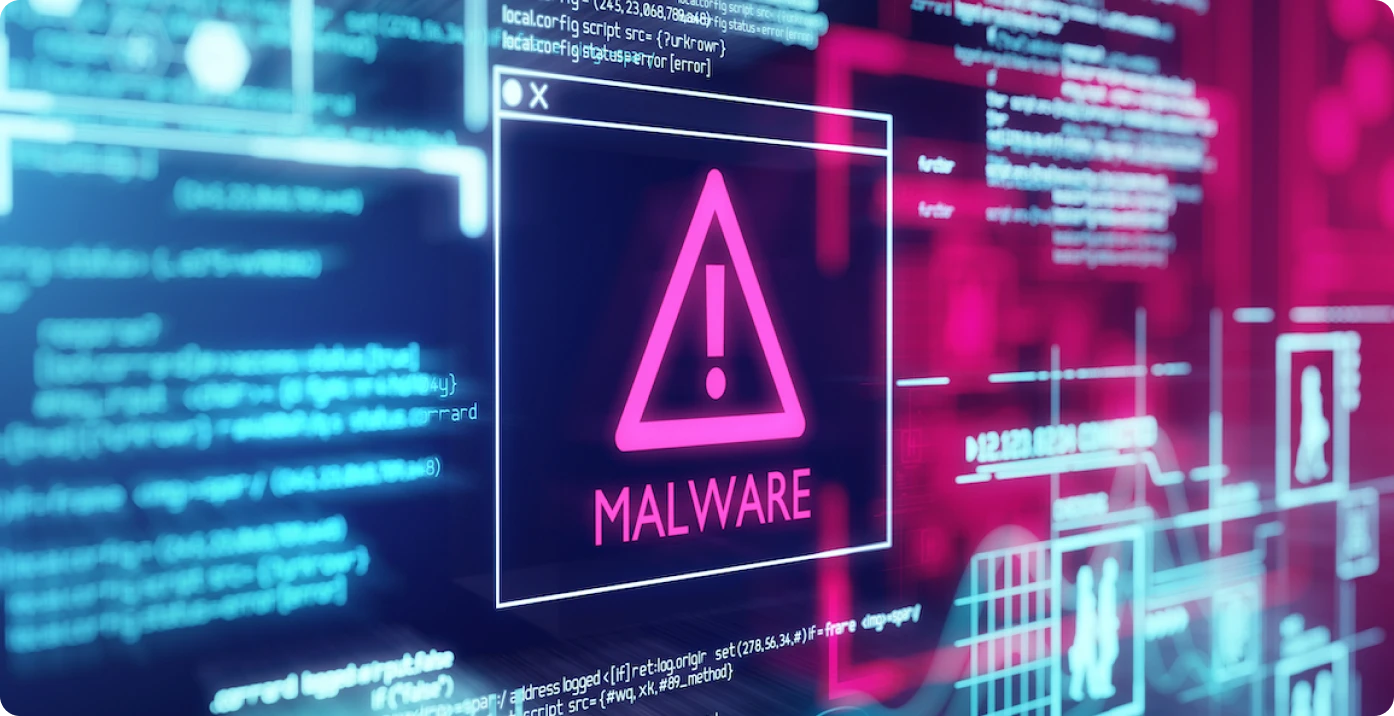#FactCheck-AI-Generated Video Falsely Shows Samay Raina Making a Joke on Rekha
Executive Summary:
A viral video circulating on social media that appears to be deliberately misleading and manipulative is shown to have been done by comedian Samay Raina casually making a lighthearted joke about actress Rekha in the presence of host Amitabh Bachchan which left him visibly unsettled while shooting for an episode of Kaun Banega Crorepati (KBC) Influencer Special. The joke pointed to the gossip and rumors of unspoken tensions between the two Bollywood Legends. Our research has ruled out that the video is artificially manipulated and reflects a non genuine content. However, the specific joke in the video does not appear in the original KBC episode. This incident highlights the growing misuse of AI technology in creating and spreading misinformation, emphasizing the need for increased public vigilance and awareness in verifying online information.

Claim:
The claim in the video suggests that during a recent "Influencer Special" episode of KBC, Samay Raina humorously asked Amitabh Bachchan, "What do you and a circle have in common?" and then delivered the punchline, "Neither of you and circle have Rekha (line)," playing on the Hindi word "rekha," which means 'line'.ervicing routes between Amritsar, Chandigarh, Delhi, and Jaipur. This assertion is accompanied by images of a futuristic aircraft, implying that such technology is currently being used to transport commercial passengers.

Fact Check:
To check the genuineness of the claim, the whole Influencer Special episode of Kaun Banega Crorepati (KBC) which can also be found on the Sony Set India YouTube channel was carefully reviewed. Our analysis proved that no part of the episode had comedian Samay Raina cracking a joke on actress Rekha. The technical analysis using Hive moderator further found that the viral clip is AI-made.

Conclusion:
A viral video on the Internet that shows Samay Raina making a joke about Rekha during KBC was released and completely AI-generated and false. This poses a serious threat to manipulation online and that makes it all the more important to place a fact-check for any news from credible sources before putting it out. Promoting media literacy is going to be key to combating misinformation at this time, with the danger of misuse of AI-generated content.
- Claim: Fake AI Video: Samay Raina’s Rekha Joke Goes Viral
- Claimed On: X (Formally known as Twitter)
- Fact Check: False and Misleading
Related Blogs

Introduction
Misinformation is rampant all over the world and impacting people at large. In 2023, UNESCO commissioned a survey on the impact of Fake News which was conducted by IPSOS. This survey was conducted in 16 countries that are to hold national elections in 2024 with a total of 2.5 billion voters and showed how pressing the need for effective regulation had become and found that 85% of people are apprehensive about the repercussions of online disinformation or misinformation. UNESCO has introduced a plan to regulate social media platforms in light of these worries, as they have become major sources of misinformation and hate speech online. This action plan is supported by the worldwide opinion survey, highlighting the urgent need for strong actions. The action plan outlines the fundamental principles that must be respected and concrete measures to be implemented by all stakeholders associated, i.e., government, regulators, civil society and the platforms themselves.
The Key Areas in Focus of the Action Plan
The focus area of the action plan is on the protection of the Freedom of Expression while also including access to information and other human rights in digital platform governance. The action plan works on the basic premise that the impact on human rights becomes the compass for all decision-making, at every stage and by every stakeholder. Groups of independent regulators work in close coordination as part of a wider network, to prevent digital companies from taking advantage of disparities between national regulations. Moderation of content as a feasible and effective option at the required scale, in all regions and all languages.
The algorithms of these online platforms, particularly the social media platforms are established, but it is too often geared towards maximizing engagement rather than the reliability of information. Platforms are required to take on more initiative to educate and train users to be critical thinkers and not just hopers. Regulators and platforms are in a position to take strong measures during particularly sensitive conditions ranging from elections to crises, particularly the information overload that is taking place.
Key Principles of the Action Plan
- Human Rights Due Diligence: Platforms are required to assess their impact on human rights, including gender and cultural dimensions, and to implement risk mitigation measures. This would ensure that the platforms are responsible for educating users about their rights.
- Adherence to International Human Rights Standards: Platforms must align their design, content moderation, and curation with international human rights standards. This includes ensuring non-discrimination, supporting cultural diversity, and protecting human moderators.
- Transparency and Openness: Platforms are expected to operate transparently, with clear, understandable, and auditable policies. This includes being open about the tools and algorithms used for content moderation and the results they produce.
- User Access to Information: Platforms should provide accessible information that enables users to make informed decisions.
- Accountability: Platforms must be accountable to their stakeholders which would include the users and the public, which would ensure that redressal for content-related decisions is not compromised. This accountability extends to the implementation of their terms of service and content policies.
Enabling Environment for the application of the UNESCO Plan
The UNESCO Action Plan to counter misinformation has been created to create an environment where freedom of expression and access to information flourish, all while ensuring safety and security for digital platform users and non-users. This endeavour calls for collective action—societies as a whole must work together. Relevant stakeholders, from vulnerable groups to journalists and artists, enable the right to expression.
Conclusion
The UNESCO Action Plan is a response to the dilemma that has been created due to the information overload, particularly, because the distinction between information and misinformation has been so clouded. The IPSOS survey has revealed the need for an urgency to address these challenges in the users who fear the repercussions of misinformation.
The UNESCO action plan provides a comprehensive framework that emphasises the protection of human rights, particularly freedom of expression, while also emphasizing the importance of transparency, accountability, and education in the governance of digital platforms as a priority. By advocating for independent regulators and encouraging platforms to align with international human rights standards, UNESCO is setting the stage for a more responsible and ethical digital ecosystem.
The recommendations include integrating regulators through collaborations and promoting global cooperation to harmonize regulations, expanding the Digital Literacy campaign to educate users about misinformation risks and online rights, ensuring inclusive access to diverse content in multiple languages and contexts, and monitoring and refining tech advancements and regulatory strategies as challenges evolve. To ultimately promote a true online information landscape.
Reference
- https://www.unesco.org/en/articles/online-disinformation-unesco-unveils-action-plan-regulate-social-media-platforms
- https://www.unesco.org/sites/default/files/medias/fichiers/2023/11/unesco_ipsos_survey.pdf
- https://dig.watch/updates/unesco-sets-out-strategy-to-tackle-misinformation-after-ipsos-survey

In the Intricate mazes of the digital world, where the line between reality and illusion blurs, the quest for truth becomes a Sisyphean task. The recent firestorm of rumours surrounding global pop icon Dua Lipa's visit to Rajasthan, India, is a poignant example of this modern Dilemma. A single image, plucked from the continuum of time and stripped of context, became the fulcrum upon which a narrative of sexual harassment was precariously balanced. This incident, a mere droplet in the ocean of digital discourse, encapsulates the broader phenomenon of misinformation—a spectre that haunts the virtual halls of our interconnected existence.
Misinformation Incident
Amidst the ceaseless hum of social media, a claim surfaced with the tenacity of a weed in fertile soil: Dua Lipa, the three-time Grammy Award winner, had allegedly been subjected to sexual harassment during her sojourn in the historic city of Jodhpur. The evidence? A viral picture, its origins murky, accompanied by a caption that seemed to confirm the worst fears of her ardent followers. The digital populace quickly reacted, with many sharing the image, asserting the claim's veracity without pause for verification.
Unraveling the Fabric of Fake News: Fact-Checking Dua Lipa's India Experience
The narrative gained momentum through platforms of dubious credibility, such as the Twitter handle,' which, upon closer scrutiny by the Digital Forensics Research and Analytics Center, was revealed to be a purveyor of fake news. The very fabric of the claim began to unravel as the original photo was traced back to the official Facebook page of RVCJ Media, untainted by the allegations that had been so hastily ascribed to it. Moreover, the silence of Dua Lipa on the matter, rather than serving as a testament to the truth, inadvertently fueled the fires of speculation—a stark reminder of the paradox where the absence of denial is often misconstrued as an affirmation.
The pop star's words, shared on her Instagram account, painted a starkly different picture of her experience in India. She spoke not of fear and harassment, but of gratitude and joy, describing her trip as 'deeply meaningful' and expressing her luck to be 'within the magic' with her family. The juxtaposition of her heartfelt account with the sinister narrative constructed around her serves as a cautionary tale of the power of misinformation to distort and defile.
A Political Microcosm: Bye Elections of Telangana
Another incident is electoral misinformation, the political landscape of Telangana, India, bristled with anticipation as the Election Commission announced bye-elections for two Member of Legislative Council (MLC) seats. Here, too, the machinery of misinformation whirred into action, with political narratives being shaped and reshaped through the lens of partisan prisms. The electoral process, transparent in its intent, became susceptible to selective amplification, with certain facets magnified or distorted to fit entrenched political narratives. The bye-elections, thus, became a battleground not just for political supremacy but also for the integrity of information.
The Far-Reaching Claws of Misinformation: Fact Check
The misinformation regarding the experience of dua lipa upon India's visit and another incident of political Microcosm of Misinformation in Telangana are manifestations of a global challenge. Misinformation, adapts to the different contours of its environment, whether it be the gritty arena of politics or the glitzy realm of stardom. Its tentacles reach far and wide, with geopolitical implications that can destabilise regions, sow discord, and undermine the very pillars of democracy. The erosion of trust that misinformation engenders is perhaps its most insidious effect, as it chips away at the bedrock of societal cohesion and collective well-being.
Paradox of Technology
The same technological developments that have allowed the spread of misinformation also hold the keys to its containment. Artificial intelligence-powered fact-checking tools, blockchain-enabled transparency counter-measures, and comprehensive digital literacy campaigns stand as bulwarks against falsehoods. These tools, however, are not panaceas; they require the active engagement and critical thinking skills of each digital citizen to be truly effective.
Conclusion
As we stand at the cusp of the digital age, the way forward demands vigilance, collaboration, and innovation. Cultivating a digitally literate person, capable of discerning the nuances of digital content, is paramount. Governments, the tech industry, media companies, and civil society must join forces in a common front, leveraging their collective expertise in the battle against misinformation. Promoting algorithmic accountability and fostering diverse information ecosystems will also be crucial in mitigating the inadvertent amplification of falsehoods.
In the end, discerning truth in the digital age is a delicate process. It requires us to be attuned to the rhythm of reality, and wary of the seductive allure of unverified claims. As we navigate this digital realm, remember that the truth is not just a destination but a journey that demands our unwavering commitment to the pursuit of what is real and what is right.
References
- https://telanganatoday.com/eci-releases-schedule-for-bye-elections-to-two-mlc-seats-in-telangana
- https://www.oneindia.com/fact-check/was-pop-singer-dua-lipa-sexually-harassed-in-rajasthan-during-her-india-trip-heres-the-truth-3718833.html?story=3
- https://www.thequint.com/news/webqoof/edited-graphic-of-dua-lipa-being-sexually-harassed-in-jodhpur-falsely-shared-fact-check

Introduction
With the increasing frequency and severity of cyber-attacks on critical sectors, the government of India has formulated the National Cyber Security Reference Framework (NCRF) 2023, aimed to address cybersecurity concerns in India. In today’s digital age, the security of critical sectors is paramount due to the ever-evolving landscape of cyber threats. Cybersecurity measures are crucial for protecting essential sectors such as banking, energy, healthcare, telecommunications, transportation, strategic enterprises, and government enterprises. This is an essential step towards safeguarding these critical sectors and preparing for the challenges they face in the face of cyber threats. Protecting critical sectors from cyber threats is an urgent priority that requires the development of robust cybersecurity practices and the implementation of effective measures to mitigate risks.
Overview of the National Cyber Security Policy 2013
The National Cyber Security Policy of 2013 was the first attempt to address cybersecurity concerns in India. However, it had several drawbacks that limited its effectiveness in mitigating cyber risks in the contemporary digital age. The policy’s outdated guidelines, insufficient prevention and response measures, and lack of legal implications hindered its ability to protect critical sectors adequately. Moreover, the policy should have kept up with the rapidly evolving cyber threat landscape and emerging technologies, leaving organisations vulnerable to new cyber-attacks. The 2013 policy failed to address the evolving nature of cyber threats, leaving organisations needing updated guidelines to combat new and sophisticated attacks.
As a result, an updated and more comprehensive policy, the National Cyber Security Reference Framework 2023, was necessary to address emerging challenges and provide strategic guidance for protecting critical sectors against cyber threats.

Highlights of NCRF 2023
Strategic Guidance: NCRF 2023 has been developed to provide organisations with strategic guidance to address their cybersecurity concerns in a structured manner.
Common but Differentiated Responsibility (CBDR): The policy is based on a CBDR approach, recognising that different organisations have varying levels of cybersecurity needs and responsibilities.
Update of National Cyber Security Policy 2013: NCRF supersedes the National Cyber Security Policy 2013, which was due for an update to align with the evolving cyber threat landscape and emerging challenges.
Different from CERT-In Directives: NCRF is distinct from the directives issued by the Indian Computer Emergency Response Team (CERT-In) published in April 2023. It provides a comprehensive framework rather than specific directives for reporting cyber incidents.
Combination of robust strategies: National Cyber Security Reference Framework 2023 will provide strategic guidance, a revised structure, and a proactive approach to cybersecurity, enabling organisations to tackle the growing cyberattacks in India better and safeguard critical sectors. Rising incidents of malware attacks on critical sectors
In recent years, there has been a significant increase in malware attacks targeting critical sectors. These sectors, including banking, energy, healthcare, telecommunications, transportation, strategic enterprises, and government enterprises, play a crucial role in the functioning of economies and the well-being of societies. The escalating incidents of malware attacks on these sectors have raised concerns about the security and resilience of critical infrastructure.
Banking: The banking sector handles sensitive financial data and is a prime target for cybercriminals due to the potential for financial fraud and theft.
Energy: The energy sector, including power grids and oil companies, is critical for the functioning of economies, and disruptions can have severe consequences for national security and public safety.
Healthcare: The healthcare sector holds valuable patient data, and cyber-attacks can compromise patient privacy and disrupt healthcare services. Malware attacks on healthcare organisations can result in the theft of patient records, ransomware incidents that cripple healthcare operations, and compromise medical devices.
Telecommunications: Telecommunications infrastructure is vital for reliable communication, and attacks targeting this sector can lead to communication disruptions and compromise the privacy of transmitted data. The interconnectedness of telecommunications networks globally presents opportunities for cybercriminals to launch large-scale attacks, such as Distributed Denial-of-Service (DDoS) attacks.
Transportation: Malware attacks on transportation systems can lead to service disruptions, compromise control systems, and pose safety risks.
Strategic Enterprises: Strategic enterprises, including defence, aerospace, intelligence agencies, and other sectors vital to national security, face sophisticated malware attacks with potentially severe consequences. Cyber adversaries target these enterprises to gain unauthorised access to classified information, compromise critical infrastructure, or sabotage national security operations.
Government Enterprises: Government organisations hold a vast amount of sensitive data and provide essential services to citizens, making them targets for data breaches and attacks that can disrupt critical services.

Conclusion
The sectors of banking, energy, healthcare, telecommunications, transportation, strategic enterprises, and government enterprises face unique vulnerabilities and challenges in the face of cyber-attacks. By recognising the significance of safeguarding these sectors, we can emphasise the need for proactive cybersecurity measures and collaborative efforts between public and private entities. Strengthening regulatory frameworks, sharing threat intelligence, and adopting best practices are essential to ensure our critical infrastructure’s resilience and security. Through these concerted efforts, we can create a safer digital environment for these sectors, protecting vital services and preserving the integrity of our economy and society. The rising incidents of malware attacks on critical sectors emphasise the urgent need for updated cybersecurity policy, enhanced cybersecurity measures, a collaboration between public and private entities, and the development of proactive defence strategies. National Cyber Security Reference Framework 2023 will help in addressing the evolving cyber threat landscape, protect critical sectors, fill the gaps in sector-specific best practices, promote collaboration, establish a regulatory framework, and address the challenges posed by emerging technologies. By providing strategic guidance, this framework will enhance organisations’ cybersecurity posture and ensure the protection of critical infrastructure in an increasingly digitised world.


